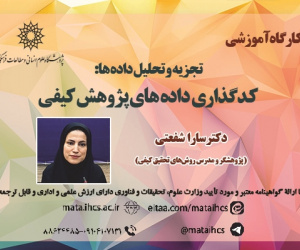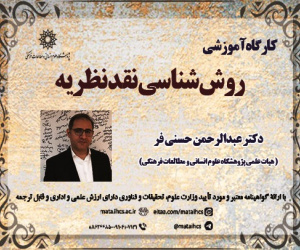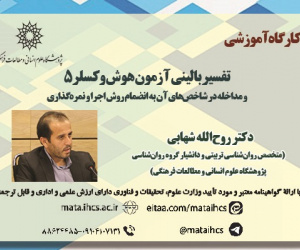طراحی و اعتباریابی مقیاس عوامل موثر در شکل گیری برنامه های درسی پوچ پنهان در دانشگاه فرهنگیان (مقاله علمی وزارت علوم)
درجه علمی: نشریه علمی (وزارت علوم)
آرشیو
چکیده
این مقاله با هدف طراحی و اعتبار یابی مقیاسی در زمینه علل ایجاد برنامه های درسی پوچ پنهان در رشته کارشناسی آموزش ابتدایی دانشگاه فرهنگیان انجام شد. رویکرد پژوهش که در سال 1400-1401 انجام شد، ترکیبی و با استفاده از طرح اکتشافی متوالی مدل ابزار سازی و طی دوگام بود. در گام اول ابزار مصاحبه نیمه ساختاریافته و درگام دوم پرسشنامه طراحی شده مورد استفاده قرار گرفت. جامعه پژوهش 1526 نومعلم دانش آموخته دانشگاه فرهنگیان در استان خراسان رضوی طی دو سال 1395 و 1400 بودند. نمونه موردنظر در گام اول به روش هدفمند و با معیار اشباع نظری یعنی 33 مصاحبه به پایان رسید. فرایند تجزیه وتحلیل داده های حاصل نیز با روش تحلیل محتوای کیفی انجام شد. نمونه پژوهش در گام دوم 490 نفر از نومعلمان بودند که براساس جدول مورگان و با روش تصادفی طبقه ای انتخاب شدند. برای تحلیل داده های پرسشنامه نیز از روش تحلیل عاملی مبتنی بر مدل معادلات ساختاری استفاده شد. یافته ها نشان داد که پرسشنامه طراحی شده دارای روایی و پایایی مناسبی هست. همچنین سه مولفه شایستگی ها و صلاحیت های اساتید، ضعف در محتوای آموزشی دروس و سرفصل و ضعف در بودجه بندی زمانی، دارای بیشترین توان پیش بینی در زمینه ایجاد برنامه های درسی پوچ پنهان در دانشگاه فرهنگیان هستند. نتایج بیانگر آن بود که مقیاس طراحی شده در این پژوهش، می تواند ابزار مناسبی برای تعیین میزان عوامل موثر در شکل گیری برنامه های درسی پوچ پنهان در دانشگاه فرهنگیان باشد.Designing and Validation of a Scale for Factors Influencing the Formation of Hidden Null Curricula at Farhangian University
This research was conducted with the aim of constructing and validating a scale about Effective Factors in the formation of hidden null curricula in the Primary Education Bachelor's program at Farhangian University. The research approach was a mixed method via the sequential exploratory design of the instrument-making model conducted in two phases. In the first phase, a semi-structured interview tool was employed, while in the second phase, a designed questionnaire was utilized. The study population consisted of 1526 novice teachers who graduated from Farhangian University in Razavi Khorasan Province in 2016 and 2021. In the first phase, the purposive sampling method was used and ended with 33 interviews with theoretical saturation criteria. The data analysis process was performed using qualitative content analyses. The second-phase sample included 490 novice teachers, selected through stratified random sampling based on Morgan’s table. Questionnaire data were analyzed using structural equation modeling (SEM)-based factor analysis. The findings indicated that the designed questionnaire possessed appropriate validity and reliability. Additionally, three components were identified as having the highest predictive power in the formation of hidden null curricula at Farhangian University: (1) instructors’ competencies and qualifications, (2) weaknesses in educational content and syllabi, and (3) deficiencies in time budgeting. The results demonstrated that the developed scale could serve as a suitable tool for assessing the factors contributing to hidden null curricula at Farhangian University.







